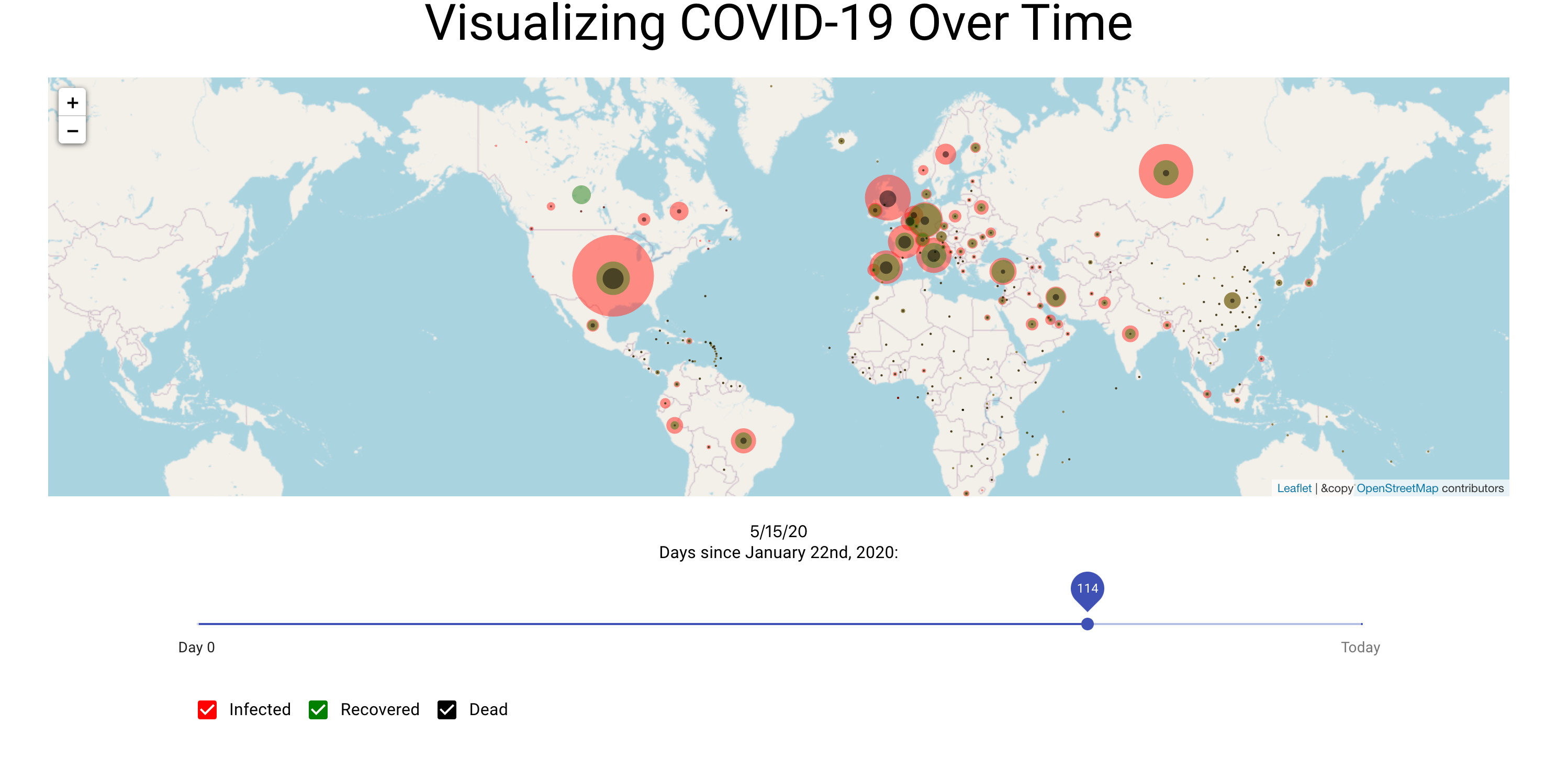Covid-19
When I first saw Johns Hopkins hacking together a Covid-19 visualization tool in February, I wanted to see what I could do, too. I realized that I wouldn’t be able produce a live map that was significantly better than the existing ones available online, but I set out to answer a different question: Can we see how Corona spreads geographically and temporally?

Screenshot of the time-based map that tracks Covid-19
I’ve since made a React visualization that monitors the spread of Corona, and I thought I would share it in case it can benefit anyone else. It pulls data from Johns Hopkins CSSE and allows users to view the status of the virus on any date from January 22nd onward (this was the first date that JHU had data for). You can drag the slider under the map to see how cases transformed the world over time.
The visualization is basic, but it helps me to better understand a few things that have been expressed by researchers.
First, it shows me that the United States is now the epicenter of the crisis, but that previously, China and Italy held this title.
It also helps me understand that gaps in testing or reporting must exist in countries like China, where data has not changed for multiple months.
Finally, if we check all the boxes in New Zealand on June 8th, 2020, we can see that the “Infected” circle almost perfectly overlaps with the “Recovered” circle. This is also the day that New Zealand announced that it had eliminated the virus from within its borders.

The day on which New Zealand announced they had zero cases
Developing something this interactive in python can prove challenging and less polished. Instead, React was the natural choice because it’s designed to present changing data via simple, responsive UI components. For the rest of this article, I’ll go over the key parts of developing this project using React.
#covid19 #maps #temporal #react #programming
